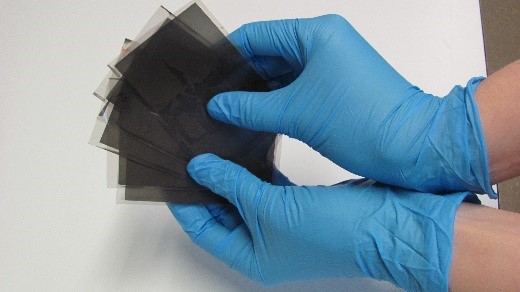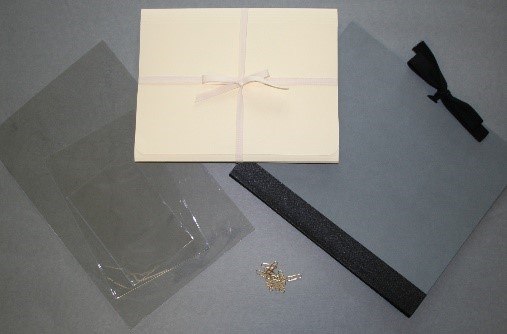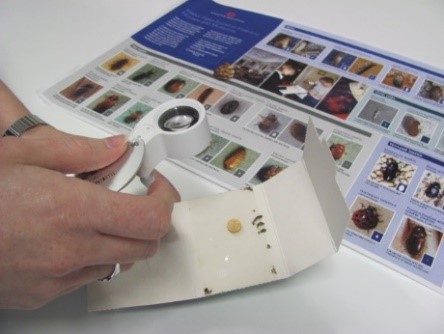We are all likely to have some sort of archive at home, whether it’s photographs and letters passed down by Nanny Jo or our own collection of school records and concert tickets, these are items that make up our collective past and they are worth preserving for future generations.
Few of us will have rooms we can convert into environmentally controlled repositories, but there are some simple steps that we can all take within our homes to help preserve our own archives. These include correct methods of handling, storing, packaging, displaying, digitising and repairing. In this blog we will cover the first three of these. While many of us are spending more hours at home, there’s never been a better time to save those photos of Great-Uncle Bert from the shed!
Handling
Whilst it’s important to look at our archives: to cherish memories and provide connections for the next generations, mishandling a document can be the easiest cause of accidental damage. There are a few simple things we can all do to limit the threat:
Tip 1. Never eat, drink or smoke when looking at your archives.
Tip 2. Prepare a clear, clean space to spread out your documents.
Tip 3. Wash your hands and don’t apply hand cream – this can stain paper!
Tip 4. Handle photographs with gloves as fingerprints can mark the image (preferably nitrile, but clean cotton would be ok too). If you don’t have gloves, hold photos by the edges or place within polyester packaging.

Packaging
Most materials naturally release chemicals that can accelerate deterioration in themselves and the items around them, for example, paper generates formic and acetic acids. Therefore, it’s a good idea to house your archive in acid-free or archival packaging which have an alkaline buffer and can help protect your precious documents.

Tip 1. Don’t use cardboard or plastic bags to store your archive in. Cardboard is very acidic and will deteriorate your archive faster and the plastic bag will trap chemicals with your documents.
Tip 2. Use archival packaging that is the right size – you don’t want to fold or stuff documents into a small box.
Tip 3. Photographs can be placed into clear polyester sleeves to protect them from handling. Polyester is an inert plastic and won’t release chemicals that are damaging to your photographs.
Tip 4. Don’t use self-adhesive photograph albums – the adhesive will deteriorate and discolour your photos. Instead, use photograph corners that will prevent any glue being in direct contact with the photo.
Storing
Most archival materials prefer cool, dry conditions. This is because heat accelerates chemical deterioration and high humidity can encourage mould growth and insects.
Tip 1. Find the coolest, driest place in your house. This will likely be a cupboard against a north-facing, internal wall, away from direct sunlight and heat sources such as radiators or fires. Hot attics, damp basements, garages and garden sheds are not suitable places.
Tip 2. Store items off the floor and away from pipes to avoid them getting wet in a leak or flood.
Tip 3. Keep them somewhere accessible – you’ll want to get them out every now and again to make sure insects aren’t eating Aunty Nell’s marriage certificate.

We hope this helps as a starter! Next time we’ll give some handy tips on digitising, displaying and repairing your archive.

